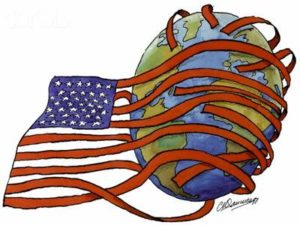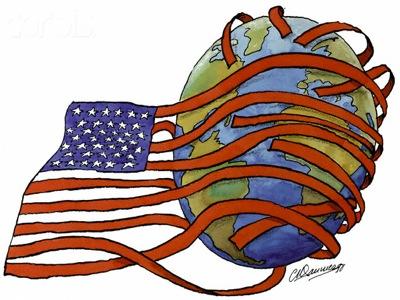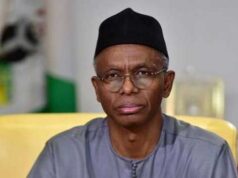 Successive American governments since 1776 have had the tendency of treating American Foreign trade as an extension of American Foreign policy and exertion of America’s influence globally. Trade deals oftentimes did not make economic sense insofar as it meets the foreign policy goals of the particular American administration that was negotiating the deal. According to statistics from the U.S. Department of Commerce, the U.S. continues to buy more merchandise from the rest of the world than we sell, as we have since the mid-1970s. The overall U.S. deficit in goods rose from $111 billion in 1990 to $763 billion in 2015. Twenty-five years ago our deficit was largely a petroleum deficit and a manufacturing deficit with Japan. Today, petroleum is only about 10 percent of the deficit. Three-quarters of the deficit is with countries along the Pacific Rim or in South Asia. Last year our deficit with China was $367 billion, or 48 percent of the overall goods deficit. Another 17 percent of the deficit involved trade deficits with Japan and Mexico.
Successive American governments since 1776 have had the tendency of treating American Foreign trade as an extension of American Foreign policy and exertion of America’s influence globally. Trade deals oftentimes did not make economic sense insofar as it meets the foreign policy goals of the particular American administration that was negotiating the deal. According to statistics from the U.S. Department of Commerce, the U.S. continues to buy more merchandise from the rest of the world than we sell, as we have since the mid-1970s. The overall U.S. deficit in goods rose from $111 billion in 1990 to $763 billion in 2015. Twenty-five years ago our deficit was largely a petroleum deficit and a manufacturing deficit with Japan. Today, petroleum is only about 10 percent of the deficit. Three-quarters of the deficit is with countries along the Pacific Rim or in South Asia. Last year our deficit with China was $367 billion, or 48 percent of the overall goods deficit. Another 17 percent of the deficit involved trade deficits with Japan and Mexico.In the following article, America’s Foreign Trade Mess: A Modern History – Alfred E. Eckes, Jr. Ohio Eminent Research Professor of History, Emeritus, at Ohio University, and a former Chairman and Commissioner of the United States International Trade Commission. analyses the history of America trade deficit in this era of globalization.
“Not since the NAFTA debate of 1992 has trade policy loomed so large in a presidential election year as it did in 2016. In last year’s elections year, political candidates of all persuasions have questioned, and even rejected, trade agreements. Donald Trump has threatened high tariffs on Chinese products, and on imports of companies that move production abroad to benefit from lower labor costs. He wants to renegotiate flawed trade agreements, such as the North American Free Trade Agreement (NAFTA), and the proposed Trans-Pacific Partnership (TPP). Hillary Clinton, whose husband presided over a sophisticated lobbying campaign to sell NAFTA to a skeptical Congress and later did the same for Chinese accession to the World Trade Organization (WTO), proposed to renegotiate NAFTA and announced her opposition to the TPP as it is currently negotiated.
How did we get into this year’s toxic trade mess? Many voters seem to believe that their political leaders betrayed American interests by negotiating flawed trade deals. This enabled transnational corporations to move jobs to China. The resulting job losses led to wage stagnation for American workers, especially those without college diplomas. In election year 2016 populist-style politicians pounded an anti-free trade message. The establishment appeared to be running scared.
According to public opinion polls, many voters in the presidential primaries were strongly motivated to vote against candidates who backed additional trade agreements. Many supporters of Donald Trump and Bernie Sanders expressed strong opposition to free trade. While some polling indicated that young people generally supported agreements like the TPP, the strongest opposition to free trade occurred among white males – particularly older and less well-educated ones. Many of these people experienced trade-related job losses, or knew others who did.
Nor was grass-roots opposition to trade agreements and globalization confined to the United States. There was intense opposition to current trade negotiations in Japan, Malaysia, Korea, France, and many other countries. In France and Germany significant opposition emerged to the proposed Transatlantic Trade and Investment Partnership. And, the decision of British voters to exit the European Union suggested that voters in high income countries had cooled to other forms of economic integration. Trade officials in the U.S. and many other countries have expressed surprise at the intensity of grassroots opposition, and indicated their determination to do a better job of selling agreements to their constituents. It is debatable whether the problem is merely one of salesmanship, or of repairing flawed products – agreements that apparently deliver benefits to the rich and powerful but few rewards to the poor and low-skilled workers in high-income countries. Among workers worry about job security seems to have resonated more than the prospect of obtaining cheaper socks, underwear and electronics at a discount store. As a consequence, there is growing concern among policymakers that open markets may not be sustainable politically, unless the benefits of trade are more fairly distributed to ordinary people. Let me say that I am not surprised that trade policy became a hot-button issue in 2016. When I served in government during the 1980s I backed free-trade agreements with Israel and Canada, but had concerns about the North American Free Trade Agreement with Mexico. In Opening America’s Market, published in 1995, I concluded by noting the possibility that “free trade among nations at vastly different income levels would exacerbate internal economic and political tensions and thus jeopardize future world peace and stability.”
As background for any serious discussion of the issues, it is helpful to reflect on existing trade patterns and this country’s chronic deficit with the world. The U.S. continues to buy more merchandise from the rest of the world than we sell, as we have since the mid-1970s. The overall U.S. deficit in goods rose from $111 billion in 1990 to $763 billion in 2015. Twenty-five years ago our deficit was largely a petroleum deficit and a manufacturing deficit with Japan. Today, petroleum is only about 10 percent of the deficit. Three-quarters of the deficit is with countries along the Pacific Rim or in South Asia. Last year our deficit with China was $367 billion, or 48 percent of the overall goods deficit. Another 17 percent of the deficit involved trade deficits with Japan and Mexico.
Some critics of existing U.S. policy associate the large trade deficits with employment losses and the stagnation of working-class wages and middle-class incomes. Of course, economists know that other factors have influenced the loss of jobs, notably enhanced use of automation and new information processing technologies. But, if one talks to ordinary Americans, they tend to blame NAFTA and China.
Of course, the trade deficit in goods is an incomplete measure of this country’s trade relationship with the world. A better measure is the current account, which considers trade in goods and services, as well as earnings on direct and portfolio investments. In 2015 – for the 35th successive year – our current account displayed a deficit. It reached $463 billion in 2015, and should be about the same in 2016. Meanwhile, several leading trading partners generate persistent, huge current account surpluses – notably China ($331 billion), Germany ($285 billion), and Japan ($136 billion).
What has caused the persistent, asymmetric current-account imbalances? Obviously, a number of factors have had some impact. They include the strong dollar, interest-rate and currency manipulations by central banks, globalization and labor-cost arbitrage, investment and savings rates, differing rates of growth, mercantilist strategies of emerging competitors, and flawed trade agreements.
In this presentation I want to focus on the last factor, because many pundits overlook its long- term significance. In my view our agreements are flawed not because our negotiators are stupid, or second-rate hacks, as some have alleged. They are flawed because our negotiating priorities have for over 80 years have included non-commercial objectives. Senator Russell Long (D-LA), chairman of the Senate Finance Committee in the 1970s, was one of the first to grasp the problem. He complained that the U.S. was granting trade concessions to achieve political objectives. He said that “throughout most of the postwar era, U.S. trade policy has been the orphan of U.S. foreign policy.” In my own research I have found confirmation that U.S. negotiators have on many occasions accepted less than optimal commercial outcomes in order to achieve foreign policy priorities. Given this country’s role in world affairs, it was perhaps inevitable that our trade diplomats should wear foreign-policy glasses when negotiating trade issues.
Little has changed in today’s world. “Trade agreements are primarily about foreign relations,” Alan Krueger, President Obama’s former top economic adviser is reported to have said. I think this point helps us understand the persistent, lopsided trade imbalances and the thrust of recent U.S. trade initiatives, such as the TPP.
There are numerous examples in the negotiating history. One key negotiation occurred during the Eisenhower administration, but its impact is still being felt. The State Department sought to integrate Japan into the world trading community, and rehabilitate it as a Cold-War partner. The one-sided agreement with Japan in 1955 gave Japanese industry full access to U.S. and European markets. But it left the Japanese home market, and agriculture, protected from U.S. and European competition. Japan insisted on protecting its infant auto, electronics, steel, and other industries against foreign competition. By the 1970s and 1980s Japan’s national champions had become world class competitors in the American market, while Japan still restricted foreign access to its home market.
Another significant example occurred during Bill Clinton’s administration, when the U.S. granted China its lowest tariff rates, or permanent normal trade relations (PNTR). This was done to integrate China into the global trading regime, the WTO. At the time China made promises of enhanced access to the Chinese market. American-based multinational corporations lobbied enthusiastically for congressional approval, and spoke of the many export-related jobs that China’s PNTR would create. One business advocate even told Congress that admitting China to the WTO was the “economic equivalent of tearing down the Berlin wall.”
At the time President Bill Clinton acknowledged that the moral and national security arguments for PNTR were more important than the economic. He said that “China will agree to play by the same open trading rules we do.”
Of course, as often happens, the promised gains did not materialize for everyone. U.S. factory workers saw manufacturing move to China to take advantage of low labor costs. And, a flood of Chinese imports soon produced spiraling trade deficits. The bilateral deficit in goods quadrupled from 2000 to 2015.
Robert Cassidy, one of the U.S. negotiators, later admitted that the pact failed to deliver on expectations. Although China made the most of U.S. concessions, the U.S. lost 2.7 million manufacturing jobs as imports from China soared. Cassidy blamed China’s currency manipulation for keeping down labor costs and stimulating its exports. Subsequently, the U.S. Treasury has confirmed that China intervened to manipulate artificially the value of its currency and promote exports.
In its 2015 annual report the U.S.-China Security Review Commission, set up to monitor China’s compliance with trade agreements, continued to report substantial violations of China’s commitments to the WTO, including use of export subsidies, failure to join the government procurement code, and currency manipulation. The Commission said that “China’s adherence to the World Trade Organization principles and its Protocol of Accession remains spotty.” A similar report from the U.S. Trade Representative offered a detailed inventory of compliance problems, and underscored the difficulties of integrating into the WTO system a non-market economy that practices mercantilism and has many state-owned enterprises. One result is that the U.S. has had to file 18 costly and time-consuming cases against China at the WTO to achieve for American firms the rights that the agreement promised.
Another controversial agreement involved the bilateral free-trade agreement with Korea which took effect in March 2012. Negotiated after the attack on the World Trade Center by the Bush administration, it was part of an effort to solidify an American strategic presence in Asia and to counterbalance China’s rising power. At the time the U.S. Trade Representative said that it meant “countless new opportunities for U.S. exporters to sell more made-in-America goods, services, and agricultural products to Korean customers – and to support more good jobs here at home.” But implementation problems dispelled the rosy forecast. The U.S. goods trade deficit with Korea nearly doubled in the first four years of the Korea FTA. Part of the explanation lies in Korean exchange-rate intervention to prevent the won from appreciating, as well other predictable compliance issues involving automotive and agricultural products.
Under President Obama there can be little doubt that foreign policy priorities continued to drive America’s trade strategy. Like the Bush administration before it, the Obama administration sought to develop a Pacific strategy that would serve as a counterweight to China and strengthen the economies of smaller countries in Southeast and East Asia. To achieve that goal U.S. negotiators pushed the so-called TPP. It is an ambitious initiative to cover some 40 percent of the global economy. It would include not only existing free trade partners, Australia, Canada, Chile, Mexico, and Singapore, among others, but also engage Vietnam and Japan. It contains a docking mechanism that would allow other countries such as the Philippines, Thailand, Colombia, and possibly even China to join. Then Secretary of State Hillary Clinton praised the pact, saying: “This TPP sets the gold standard in trade agreements to open free, transparent, fair trade, the kind of environment that has the rule of law and a level playing field.”
The TPP, like NAFTA template and the other regional and bilateral agreements negotiated in this century, is far more than an agreement to remove tariffs and quotas. It is a comprehensive trade and investment agreement that would also remove many nontariff barriers to goods and services, trade, and investment among the 12 parties to the agreement. TPP also includes a wide range of regulatory provisions that would define rules for trade between the parties. These involve investment, intellectual property, government procurement, rules of origin for trade in certain goods, customs facilitation, sanitary and phytosanitary measures, technical barriers to trade, competition policy, and labor and environmental standards, among other issues.
Because of the complex topics included, the U.S. International Trade Commission found it difficult to assess the agreement and its likely impact on the U.S. economy. It concluded that “some of these provisions are difficult to quantify, but they have the potential to positively affect the U.S. economy by strengthening and harmonizing regulations, increasing certainty, and decreasing trade costs for firms that trade and invest in the TPP region.” But the USITC study suggested only minimal American gains from tariff reductions in the TPP.
Unofficial assessments of the TPP vary widely. The Chamber of Commerce of the U.S. is an enthusiastic booster. It has stated that the TPP offered the best opportunity to level the playing field for American workers, farmers, ranchers, and companies by sweeping away more than 18,000 tariffs and a thicket of other trade barriers. The Chamber applauded a study by the Peterson Institute that estimates the benefits of the TPP are “more than 100 times the costs” and will be “shared widely.” Others, such as organized labor and the Public Citizen’s Global Trade Watch, reached more critical conclusions. They voiced concern that the TPP will allow transnational corporations to employ extra-judicial panels, known as Investor State Dispute Settlement panels (ISDS). Decisions of these panels could challenge domestic environmental, zoning, health and other public interest policies. There was also concern that the pact contained NAFTA-like provisions requiring the U.S. to accept food that may not meet domestic safety standards.
From my standpoint both the liberal and conservative critics have raised serious concerns about how the pact intrudes on national sovereignty and the U.S. Constitution. Senator Elizabeth Warren (D-MA) has observed that “this isn’t a partisan issue.” She said that “conservatives who believe in U.S. sovereignty should be outraged that ISDS would shift power from American courts, whose authority is derived from our Constitution, to unaccountable international tribunals.” Similarly, she argued that “progressives should oppose ISDS because it would allow big multinationals to weaken labor and environmental rules.”
Does the TPP establish a EU-style Commission with broad powers over its member countries and their sovereignty? Senator Jeff Sessions (R-AL) has argued that in approving the pact Congress would be delegating authority to an international commission. “Disguised as a simple trade agreement,” the 5,554-page accord “commits the American people to an international commission with the power to act around Congress.” On the commission the U.S. would have an equal vote with 11 other nations, some with less than 1 percent of this country’s GDP. Senator Sessions concludes that “actions by this commission separate the American people from the policy decisions that affect their lives. The TPP Commission is a direct threat to representative democracy and accountability.”
Like other recent trade agreements, patterned after NAFTA, the TPP might be described as a “lawyer’s relief” act, for it empowers lawyers and allows corporations to bring cases at will against member governments. Workers, however, cannot use the shadow justice system to resolve their complaints, without the approval of their governments, a provision apparently intended to discourage worker litigation.
The real victor from the TPP promises to be Vietnam. It will gain unobstructed access to the U.S. market for its low-cost apparel and footwear. Strengthening Vietnam as a counterweight to China in Southeast Asia is President Obama’s objective. During his May 2016 to Vietnam, he stated: “We’re pursuing the Trans-Pacific Partnership – not only to support trade, but to draw our nations closer together and reinforce regional cooperation.
Since the economic argument for TPP seems questionable, the Obama administration is stressing the national security argument. Governor John Kasich of Ohio, a Republican supporter of the agreement, said in a recent Washington Post article that “expanding trade is about more than growing our economy; it’s also about ensuring our national security and asserting the United States’ willingness to stand tall against those who wish us ill.”
A fast-track approval provision adopted by Congress will allow the Obama administration to gain an up-or-down vote on TPP without costly, delaying amendments. But, Senate Majority Leader Mitch McConnell (R-KY) has indicated that there will be no action on the pact until the next U.S. administration takes office. Of course, circumstances could change after the election in a lame-duck session of Congress.
Let me offer an additional thought about the recent history of U.S. trade policy as it relates to free and fair trade. While attending a recent conference in Washington, DC, I heard the U.S. Trade Representative indicate that we live in a “Free Trade/Fair Trade” world. His “inside-the-Beltway” interpretation appears to rest on the following premises. First, trade negotiators have largely succeeded in creating a trading system free from significant border barriers. And, second, they have succeeded in establishing a complex dispute-resolution system, involving the WTO, national regulators and courts, and ad hoc dispute-resolution panels for addressing trade conflicts and correcting many unfair practices. These include subsidies, dumping, intellectual-property infringements, and investment disputes. Arguably, this process has made trade fairer as well as free.
On the first point, data published by the World Bank apparently show that we live in a free-trade world today. The average tariff on all imports of OECD countries, countries that account for over 60 percent of world imports, is only 1.7%. The U.S. International Trade Commission reports that the average duty collected on all U.S. imports is 1.5%, and on all dutiable imports 4.9%. A duty of less than 5 percent is much like a state sales tax. It has relatively little impact on trade flows. Other factors such as currency rates and transportation costs are more important. At the present time seventy percent of U.S. imports enter duty free.
Having succeeded in largely creating a free-trade world for trade in goods, the trade negotiating elite has turned its attention to removing and harmonizing internal barriers to trade and investment. Responding to the desires of transnational business, the negotiators are writing rules for conducting global business in the twenty-first century. Recent agreements thus attempt to deal with a variety of 21st century regulatory topics that Adam Smith never contemplated in the Wealth of Nations. Many of these defy existing economics models, either because data is not available or the models are deficient. As a result, economists have difficulty evaluating rules pertaining to trade in services, intellectual property, investments, competition, information, dispute-resolution procedures, investment guarantees, state--owned enterprises, government procurement, and similar provisions contained in contemporary trade pacts.
International Trade Commission says that the computable general equilibrium models that economists use to estimate the effects of trade negotiations are of doubtful value when looking at many of the topics folded into trade agreements. These include provisions that are “difficult to quantify, such as commitments on government.
Perhaps that is one reason that lawyers and experienced diplomats, not economists, seem to dominate the trade-negotiating process. To ensure fairness in our contemporary free- trade world, diplomats and lawyers also monitor these agreements, and judges and dispute settlement panels resolve conflicts. The WTO’s Dispute Settlement Body acts as an international supreme court for trade disputes brought by member governments. Thus, it is at least arguable that we presently live in a world of free and relatively fair trade if fairness can be defined by the presence of rules, regulators, and impartial dispute resolution panels.
But, if fairness means balanced outcomes, then obviously the flaws in our negotiated agreements merit closer attention. The present system has no automatic checks and balances against countries with perpetual surpluses or countries with persistent deficits.
So how can the next U.S. administration remove these asymmetries and restore a measure of balance to our trade accounts? A Clinton or Trump administration may find it desirable to renegotiate past agreements and use the leverage of the largest consumer market to exact more favorable terms for U.S.-based industries and workers. This approach will be difficult, because other nations will use the opportunity to renegotiate provisions of interest to them. The next U.S. administration may press for effective sanctions against countries with persistent surpluses, such as China and Germany. But, it can be anticipated that surplus countries will push back against such proposals, as they have in the past at the International Monetary Fund and the WTO. Or the new administration may choose to seek cosmetic modifications to the TPP and push onward with already negotiated arrangements. President
procurement, competition, state-owned enterprises, and intellectual property that are not considered in the model.” U.S. International Trade Commission, TPP (May 2016, publication 4607), 87.
Bill Clinton took this approach to the NAFTA agreement negotiated under President George H. W. Bush. Of course, it is a version of the old, kick-the-can-down-the-road approach.
The last approach will appeal to those in the elite who believe that inaction on TPP jeopardizes American global leadership. I remain doubtful, based on past history, that approval of the TPP will bring much benefit to middle-income and working-class Americans who have experienced job losses and stagnant incomes as a consequence of prior negotiations, and those who may encounter job dislocations as new agreements are implemented. In presidential election year 2016 many angry citizens seemed more interested in stabilizing their own economic circumstances, preserving jobs, and protecting the nation’s borders, than in pursuing the cheaper prices that may accompany greater efficiency and interdependence in a global economy. Some years in the future observers may look back on this turbulent year as a turning point, when grass-roots democracy and resurgent nationalism in the United States, and Western Europe, succeeded in derailing the globalization process that elites have declared inevitable and irreversible.”
****
Alfred E. Eckes, Jr., is Ohio Eminent Research Professor of History, Emeritus, at Ohio University, and a former Chairman and Commissioner of the United States International Trade Commission. He is the author of a number of books on international trade and economic history, including The Contemporary Global Economy: A History since 1980 (Wiley-Blackwell, 2011); U.S. Trade Issues: A Reference Handbook (Santa Barbara, CA: ABC-CLIO, 2009); Globalization and the American Century (New York: Cambridge University Press, 2003) with Prof. Thomas Zeiler; and Opening America’s Market: U.S. Foreign Trade Policy Since 1776 (Chapel Hill: University of North Carolina Press, 1995).








Yankee still remains my number one